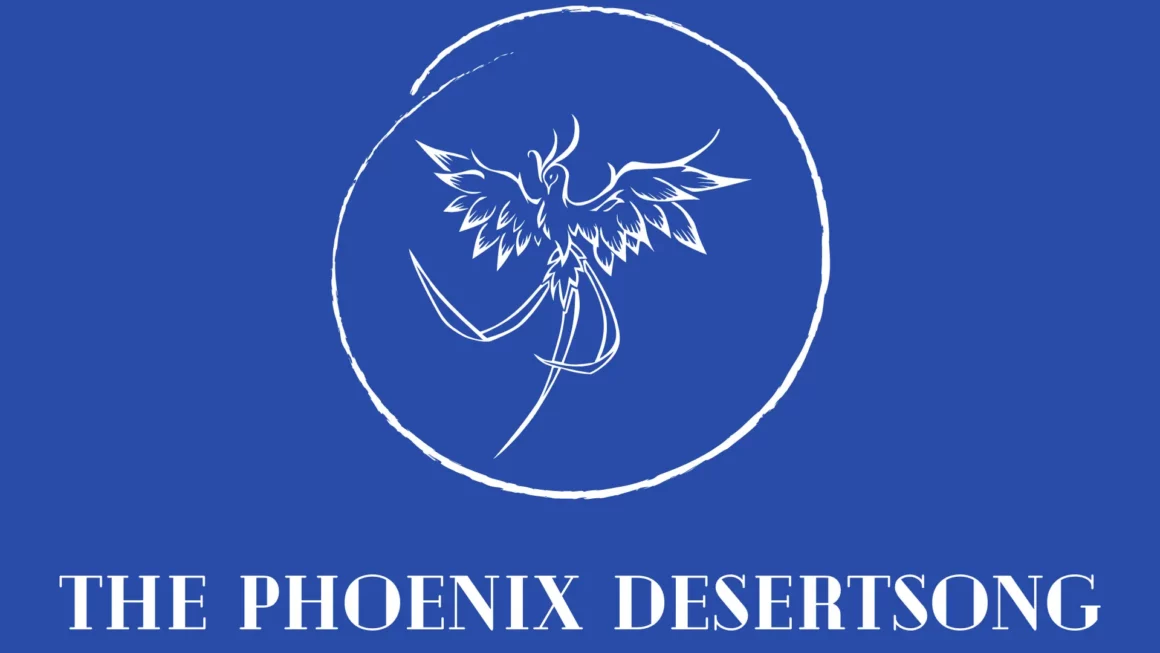The concept of a “perfect” sentence is as elusive as a mirage in a sprawling desert. We chase it, knowing full well it recedes from us with each step we take forward. As a writer, I’ve come to recognize that while there may be objectively bad writing, the art of composing sentences is profoundly subjective. It’s a personal journey through a forest of syntax and style. Each and every path can lead to different enchantments, perils, and discoveries.
A perfect sentence doesn’t really exist. Sure, there’s objectively bad writing. But, like any art, writing is for the most part subjective. Still, I don’t feel it fair to subject my own quality standards on others. It feels like trying to capture sunlight with a net — futile and a bit presumptuous — especially when their own expressions find an audience in the real world.
I prefer to be constructive with criticism, and deconstructive of ideas, statements, and concepts, not people. Rather than critiquing with a heavy hand, I prefer to approach writing like a gardener tending to ideas; nurturing growth and pruning excess, focusing on the vitality of the concept rather than the flaws of its form.
Yet, I can’t help but recognize my own old-school tendencies in writing style. I revel in the rhythm of long sweeping sentences, adorned with commas and semicolons like lace on a Victorian gown. This style may not suit the modern palate, which often favors the quick, sharp snap of “conversational” language —much to my chagrin. It doesn’t seem to work for most in the modern crowd, though. I abhor sentence fragments. Kids love them. It’s really annoying. They’re fine in bullet points, but not in proper prose.
Still, in this ever-evolving dialogue between my pen and paper, I’m constantly reminded that the pursuit of a “more perfect” sentence isn’t just about adhering to rules, whether personal or societal. It’s always about stirring the soul of the reader. You also have to know why you’re writing in the first place.
I made it a point with my 2024 book ‘Chronicles of Absurdia’ to give actionable advice, no matter how abstract or philosophically dense any given piece might become. I’ve continued that trend in every essay going forward. My next goal is to condense many of my longer musings into snappy one to three paragraph short reads. But, this is much easier said than done and requires I have much more intentional practice with writing more perfect sentences.
So, how do we create a more perfect sentence?
What Even is a “Perfect” Sentence?
While perfect sentences are elusive, the journey towards crafting better sentences can enhance both the writer’s skill and the reader’s experience. Writing is an art form dictated by personal taste and stylistic preferences, much like painters choosing between bold strokes and fine lines. As a seasoned writer, I’m drawn to the architectural beauty of long, detailed sentences. These sentences are like grand old rivers, meandering through landscapes rich with descriptive detail, adorned with the decorative foliage of punctuation, and increasingly, em dashes. They invite the reader to linger, to absorb the complexity of thought and the depth of emotion conveyed through their structured flow.
However, in contrast to my affinity for linguistic masterpieces, modern writing trends have shifted towards an economy of expression. Today’s readers often prefer quick, clear cuts of communication — sentence fragments that deliver information rapidly and with punch. This minimalist style makes sense in a fast-paced, digital world where messages are consumed in the space between breaths. Every word, then, must fight for its place on the page.
This modern brevity, often seen in the writing styles of younger generations, can be likened to a series of snapshots. Each one captures a moment without the need for connective narrative. These fragments, while sometimes jarring to traditionalists like myself, have their own rhythm and energy. They mimic the abrupt stops and starts of our daily digital interactions. Indeed, they’re perfectly suited to screens that scroll endlessly.
The divergence between these styles highlights the subjective nature of writing. What one sees as a flaw — be it a tangled garden of commas or a barren wasteland of incomplete thoughts —another might view as the piece’s greatest strength.Each approach has its place, informed by the writer’s objectives and the expectations of their audience. Thus, the craft of writing isn’t about conforming to one ideal — self-imposed or otherwise — but about choosing the tools that best suit the piece’s needs and the reader’s desires.
Writing preferences diverging across generations isn’t merely a stylistic choice; it reflects deeper cultural and technological shifts that shape how different age groups communicate and process information. Younger generations, raised in the digital age, are accustomed to rapid-fire communication. Social media platforms, text messaging, and other digital media often favor short, direct statements that can be quickly written and easily digested in the midst of multitasking. This environment encourages a style that can feel disjointed or fragmented to those who have matured with a preference for more traditional, linear narratives such as myself. In this context, sentence fragments are adaptations to an environment where brevity is often necessary to capture fleeting attention spans.
On the other hand, older generations may view the construction of longer, more complex sentences as a mark of intellectual engagement and depth. For them, such sentences offer a canvas to explore nuanced thought and convey richer, more textured narratives. This style rewards readers with the patience to unravel intricate structures and connect extensive thoughts. It parallels traditional forms of reading that involve deeper immersion and reflection.
My own discomfort with sentence fragments highlights a broader tension between preserving literary traditions and adapting to new communicative norms. This tension isn’t so much about preference but about the ways in which language evolves to meet changing societal needs. While younger writers might see sentence fragments as efficient and impactful, older writers might view them as symptomatic of a declining attention span and a loss of depth in communication.
Ultimately, these generational shifts in writing reflect broader changes in how information is consumed and valued. They challenge writers and readers alike to find common ground between clarity and depth, brevity and beauty. After all, the evolution of writing styles is both inevitable and necessary for the art form to remain relevant.
Whenever we write, every writer plants seeds — ideas that we hope will take root in the fertile soil of readers’ minds. As someone who nurtures these sprouts of thought, I’ve come to appreciate the importance of constructive criticism. Like gentle rainfall, it provides nourishment, encouraging growth rather than eroding the tender soil with harsh judgments.
When critiquing another’s writing, it’s easy to wield the scythe too recklessly. How many budding ideas get cut down before they have a chance to fully bloom? Destructive feedback can scorch the earth, leaving a barren field where creativity withers under the heat of discouragement. This is why I prefer to approach criticism like a seasoned gardener, pruning with care and supporting the natural shape of the plant. I cherish the writer’s unique voice and honor their ideas, rather than imposing my own stylistic preferences and preconceptions.
Focusing on ideas and concepts allows us to engage deeply with the writer’s intent, rather than merely evaluating their execution. It’s like tasting a stew and savoring the blend of flavors rather than picking apart each ingredient. We must respect each writer’s creative essence and acknowledge that each piece of writing is more than a sum of its syntactical parts; it’s a complex concoction of thought, emotion, and purpose.
By providing feedback that aims to clarify and elevate the writer’s ideas, we create a lush landscape where diverse expressions flourish. Such a nurturing environment not only helps writers refine their craft but also enriches the broader literary ecosystem with a variety of voices and perspectives. In this way, constructive criticism doesn’t just polish individual sentences—it cultivates a whole forest of understanding, where every leaf and twig has its place in the intricate canopy of human expression. Only then can writers find a way to craft more perfect sentences that achieve their goals.
Seeking Perfection Through The Function of Writing
I’ve always envisioned my writing craft as a grand old theater where the stage serves a dual purpose — both to enlighten and to entertain. In this architectural metaphor, I strive to raise the floor beneath each reader’s feet, giving them a sturdier, more elevated platform from which to view the world. Simultaneously, I aim to extend the ornate ceiling above, crafting it with intricate frescoes that provoke thought and stir the imagination.
Educating my audience is laying down facts and insights, meticulously placed to support and enhance the reader’s understanding. This foundation allows them to stand firmer, see further, and step confidently into dialogues and debates, armed with newfound perspectives. My mission is to turn the dimly lit corridors of readers’ minds into luminous halls of awareness and reason.
At the same time, I aim to weave narratives that stretch the ceiling — pushing the boundaries of readers’ imaginations to new heights. Like an illusionist in a carnival, I use language to conjure worlds that captivate the senses, ideas that hover like fireflies caught in a summer’s eve. This part of my writing invites readers to leap into the unknown, to flirt with bizarre concepts and question what they know of reality.
As such, my prose is more than a means of transferring information, becoming a dual conduit of enlightenment and entertainment. I wish my words to create a space that’s as much a school as it’s a playground, where learning is an adventure and contemplation a delightful game. By achieving this blend, I hope not only to inform but also to inspire, leaving my readers both grounded in knowledge and elevated in thought.
In “Chronicles of Absurdia,” I ventured to blend the tangible with the abstract, weaving threads of actionable advice even through philosophically dense narratives. The book, much like a whimsical garden of paradoxes, invites readers to stroll along its intricate paths, where practical wisdom blossoms amidst the lush, sometimes bewildering flora of existential thought. I will continue to pursue the same sort of actionable philosophical commentary in all of my essays going forward.
Each essay is crafted like a vignette in an artist’s gallery, presenting scenarios that may first appear as bewildering labyrinths of absurdity. Yet, as one navigates through these enigmatic tales, signposts emerge to guide the reader not only in thinking deeply but in applying these reflections to their daily lives. It’s here that my explorations of the absurd serve their dual purpose, grounding high concepts in the soil of everyday relevance.
For instance, a story might explore the Sisyphean task of seeking perfection in an imperfect world, a theme that resonates in the vaulted halls of philosophy. Yet, rather than leaving readers in the echo of existential despair, I offer a lantern in the dark—a series of practical strategies for embracing imperfection in one’s work and life, transforming philosophical insight into a tool for personal and professional growth.
Thus, “Chronicles of Absurdia” becomes more than just a book; it’s my crucible where abstract theories are alchemized into golden nuggets of actionable advice. This approach not only educates but also engages, challenging readers to elevate their thinking while providing a firm ground on which to stand. It’s this balancing act between the ethereal and the practical that aims to enrich the reader’s mind and, perhaps, their soul.
Where things often go very wrong for me is when I try to condense my longer musings into shorter, more accessible articles. The art of distilling complex ideas into concise, impactful narratives is like sculpting marble. We start with a vast block of dense material and chisel away until a clear, refined form emerges. Each strike of the chisel removes unnecessary material, each adjustment refines and reveals more of the intended shape.
Slowly but surely, sentences are chiseled into form, each strike removing a layer of confusion. The chiseling continues to hone the writer’s thought until the final form is sleek and precise, consistent with the clarity of well-crafted prose. This process, both arduous and delicate, demands of us a keen eye and a steady hand, as the sculptor—or in this case, the writer—must discern which parts are essential to the integrity of the piece and which are mere excess.
In my own quest to condense the elaborate musings of my longer works into pithy, potent parcels of prose, I‘ve found this to be a delicate balance of precision and intuition. Each sentence must be meticulously crafted, each word weighed for its contribution to the overall effect. Like a master jeweler facets a gem, I too must treat my sentences, ensuring they catch the light of understanding from any angle, sparkling with clarity and insight.
My effort to refine and perfect sentence construction is not merely a technical exercise, but a philosophical pursuit. It’s a quest of achieving purity of expression, where every syllable serves a purpose and no phrase is without its place. The challenge lies not only in the reduction of words, but in the amplification of meaning. How do we ensure that in stripping away the flesh, the soul of the idea not only remains intact, but is also accentuated?
Through intentional practice and a dedication to the craft, each shortened piece becomes a testament to the possibility of brevity and depth coexisting harmoniously. It requires a rhythm of thought, a poetry of logic, where the narrative arcs are tighter, but the peaks are just as high. As I continue to sharpen this skill, my goal isn’t just to write more efficiently, but more expressively. I long to deliver dense philosophical insights in a form that is accessible, engaging, and ultimately transformative for all of my readers.
Seeking Perfection Through The Process of Writing
The act of beginning any creative work from “nothing” is both a philosophical journey and a practical challenge, akin to … a composer poised before a silent piano. Starting with nothing is everything, but what is nothing? You exist. You chose to set yourself to creation. Your tool for doing this is writing. That in itself isn’t nothing; it’s just not clear what something you are about to create, no matter what your original intention may have been. Anyway, enough philosophical meandering, let’s get to the topic at hand.
This ‘nothingness’ isn’t merely an absence. Rather, it’s a space brimming with potential, where the contours of new worlds and the echoes of unwritten symphonies hang in the balance, waiting to be summoned into existence. To start with ‘nothing’ is to engage with the void—facing the existential uncertainty that accompanies the genesis of any creative endeavor. It’s a daunting, exhilarating precipice; a moment of pure possibility that asks what might be conjured from the ether of thought.
This creative genesis reflects the existentialist idea that existence precedes essence. We must first exist. Each of us must face the blankness before we can imprint upon it our essence, our ideas, and our visions. Such blankness, this existential canvas, challenges the creator to define themselves and their work anew with each undertaking.
So, this is a call to action that hearkens back to the Socratic wisdom of knowing that one knows nothing. From this humble acknowledgment of ‘nothing,’ the creative process begins—a process fraught with the risk of failure, but also ripe with the potential for discovery.
As I navigate this void in my own writing, I find that ‘starting with nothing’ becomes a meditative practice. I must welcome the unknown with open arms and an open mind. As creators and vessels of thought, we must allow ideas to flow freely without the constraints of preconception. The first mark on the canvas, the first note in the silence, the first word on the page — each is an affirmation of creation, in defiance of the void.
Thus, each new project is a philosophical statement, an assertion that from ‘nothing’ we can indeed create ‘something’—something meaningful, something enduring, and perhaps, something beautiful. It’s a perpetual return to the existential cradle of creativity, where each venture is a rebirth and each creation a new piece of the puzzle that is our understanding of the world and ourselves.
The crafting of a sentence is often likened to a potter shaping clay on a wheel; each word is a touch, a gentle pressure that molds formless thoughts into tangible expression. This foundational act of writing is where the alchemy of creation transforms the ethereal into the concrete. Vague ideas and fleeting intentions are captured and formed into something sturdy that can be shared.
Each sentence begins as a raw, unformed notion — a shadow of a concept that flits through the mind like smoke. The writer’s task is to capture this wisp, to cool it and condense it into a structure that can be seen, felt, and understood. This is a delicate process, requiring both vision and restraint. Too much force can shatter the fragile beginnings of an idea, while too little can leave it formless and obscure.
As each sentence takes shape, it becomes a vessel, carrying our intent through the currents of communication. This vessel must be more than a mere carrier of information, but engineered to navigate the complex waters of human emotion and intellect. The choice of words, their rhythm and cadence — all these elements are like the curves and contours of a water-bound vessel, designed to cut through the froth of distraction and deliver the cargo of ideas efficiently and elegantly to the reader.
This process can’t simply be a mechanical process, but one that’s also deeply reflective and introspective. In forming sentences, we writers not only construct a message but also discover their own meanings. Each sentence is a step in a journey of understanding, a path that may twist and turn as the terrain of thought reveals itself. In the end, a writer communicates not just with an audience, but with themselves, exploring and affirming their own insights and emotions.
Thus, the act of forming a sentence is the bedrock of writing, a fundamental exercise that bridges the chasm between the known and the unknown. It’s both a discovery and a creation, a dialogue between us and the word, where each crafted sentence reaches out like a bridge, spanning the gap between minds and hearts. This is the magic and the mission of writing: to turn the silence of contemplation into the harmony of conversation.
In the grand architecture of prose, each sentence serves as a vital building block, meticulously laid to support the towering edifice of narrative and argument. Like a mason setting stones in a wall, the writer places each sentence with deliberate intent, ensuring it fits snugly against its neighbors, enhancing the structure’s overall strength and beauty.
Each sentence, then, is a step toward greater clarity and purpose. It’s an invitation to stride through the fog of ambiguity, a lantern raised high to illuminate the path ahead. As we writers forge these sentences, we’re paving a thoroughfare of understanding, allowing readers to journey smoothly from introduction to conclusion.
Furthermore, each sentence much align with an overarching purpose. They’re the brushstrokes in a larger painting, where each line of text colors in more of the scene. Each syntactic choice shades the picture with deeper meaning and nuance. We writers, like any artist, use these strokes to guide the viewer’s eye, to highlight contrasts, and to draw attention to the central themes of the work.
In this way, the crafting of sentences is both a discipline and an art. It requires the precision of an engineer and the insight of a poet. Each sentence laid in the structure of prose is a commitment to moving forward. It’s a promise to the reader that their journey through the text will be enlightening and purposeful. With every sentence forged, we build not just a narrative or an argument, but a bridge to understanding, inviting our reader sto cross into the realm of new perspectives and enriched insights.
Closing Thoughts
Our quest to craft better, more perfect sentences is a journey that unfolds with the precision of a cartographer mapping uncharted territories. We must blend the meticulous artistry of language with the clear intention of communication.This ongoing endeavor is less about reaching a definitive destination of perfection and more about the continuous exploration of linguistic possibilities.
While no sentence can claim universal acclaim or perfection, the pursuit of crafting better ones is undeniably noble. Each effort to enhance a sentence elevates the prose, sharpens the message, and deepens the connection with the reader. This pursuit goes far beyond the mechanical task drilled into professional writers by instructors and institutional expectations. It must instead be a dynamic interaction with the very essence of thought and expression. Better sentences enrich both the writer’s craft and magnifies reader’s engagement.
With every sentence refined and every paragraph I polish, I find not only my skills as a writer enhanced but also my insights as a person deepened. This continual striving towards more perfect sentences molds not just our words, but shapes us into more thoughtful, perceptive individuals.
Thus, our endless quest to write better sentence mirrors the broader theme of personal evolution. This pilgrimage through the realms of language not only marks progress in the craft, but also celebrates the unfolding journey of the self. Through this pursuit, we not only leave marks on pages, but also carve deeper understandings into our souls. Each piece that we write, edit, and send out into the world forever changed by the words we weave and the truths they unveil.
~ Amelia Desertsong



